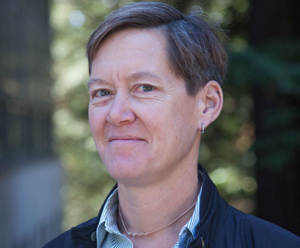A new campus website connects faculty, graduate student Instructors, and teaching assistants with a host of resources, both on campus and off, to support their teaching. The website, launched by the Center for Innovations in Teaching and Learning (CITL), includes information about campus offerings such as workshops, fellows’ programs, and graduate pedagogy certificates, as well as a library and storehouse of useful online open access resources related to teaching and learning.
The materials on the website are part of a nationwide network of teaching center websites that share materials related to topics such as active and student-centered learning, inclusive teaching, effective mentoring, and the design and delivery of successful courses. These materials are grounded in research on how to promote learning in college classrooms, and draw on fields as diverse as cognitive neuroscience, social psychology, and the science of learning. Instructors can also find information about how to document their teaching for a job search or personnel review, as well as a comprehensive listing of campus resources for students facing academic or personal challenges.
The website was designed and curated by CITL Associate Director for Programs Kendra Dority and Graduate Student Researcher Kristin Miller, a Ph.D. candidate in the Sociology Department. Support for the website construction came from the Graduate Division, as well as from the CITL. In assembling materials for the site, Dority and Miller sought to provide a virtual hub for anyone wanting to consult respected, evidence-based resources on effective teaching and engaged learning.
“When building the website, we aimed to compile the most practical resources on the topics that we have learned, through our own experiences as educators as well as through interactions with faculty and graduate students at CITL programs, are most important to instructors at UC Santa Cruz. The resources we have included are also those that best distill the current research on teaching and learning into an accessible format for busy instructors,” Dority said of her work with Miller. “We look forward to growing the resource library to respond to instructor needs.”
“We kept CITL’s commitments to equity and accessibility in mind at every stage of the process,” said Miller. “It was rewarding to figure out how to translate pedagogical ideas about clear communication and inclusivity into effective information architecture and visual design.”
While UC Santa Cruz has a long history of dedication to outstanding undergraduate and graduate education, the website is the first attempt to make the recent outpouring of research- and evidence-based teaching practices developed specifically for higher education easily accessible to all those who teach on campus. The idea was that any instructor designing a new course or revamping an existing one, wondering about how to create a good assignment or write a rubric, or wanting to find out how to make their classroom a more equitable and inclusive space for student discussions or groupwork, could simply consult a single website, or at least start a search for information there.
In addition, the website will house a small archive of short videos with quick tips about teaching practices from members of the UC Santa Cruz faculty. The first two of these videos—on active learning and inclusive teaching in large lecture courses—are available now.



